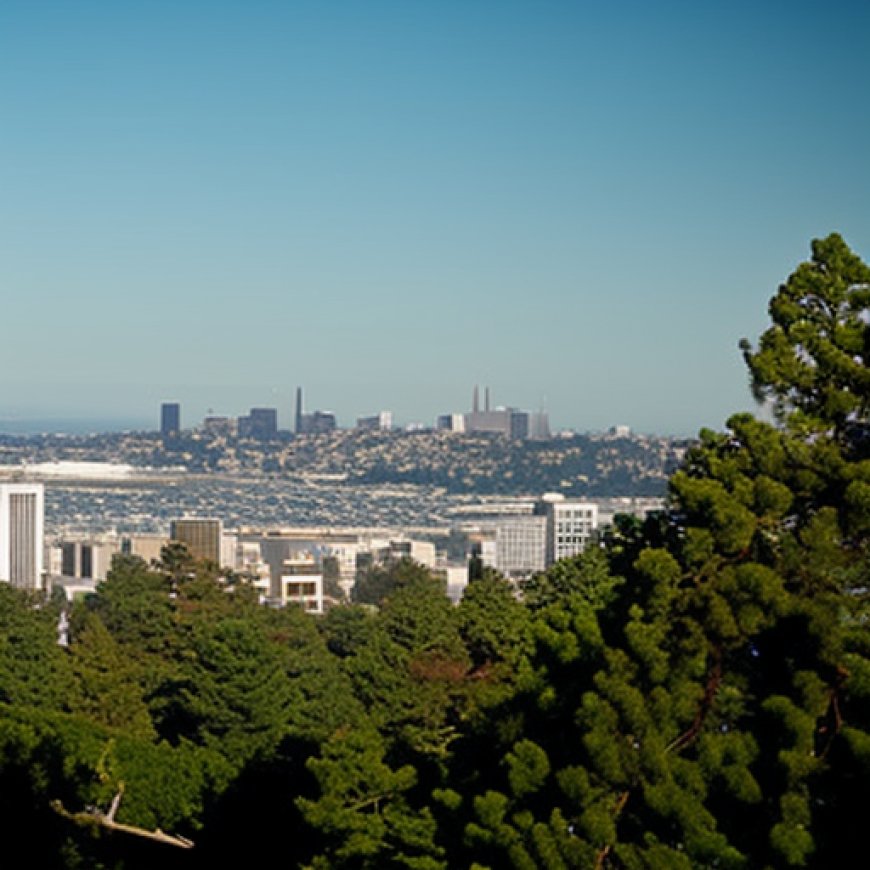How should Oakland tend its urban forest?
How should Oakland tend its urban forest? Oaklandside


Urban Forest Plan in Oakland
There are roughly 68,000 trees growing in parks and along streets in Oakland. This urban forest cleans the air we breathe, provides shade, filters groundwater, creates habitat for animals, and brings us joy. But the city’s trees need a helping hand to thrive. And not all parts of Oakland benefit from a tree canopy.
This is where the city’s Urban Forest Plan comes into play. The plan is supposed to guide Oakland in maintaining and expanding its urban forests to make sure these investments are shared by all Oaklanders. Right now, Oakland residents have an opportunity to shape this plan.
Public Review and Comment Period
The City of Oakland released the first draft of its long-awaited Urban Forest Plan on Oct. 30. Members of the public can review and comment on the plan from now until Dec. 8, 2023. After the public comment period is over, the City Council will vote on the revised plan. If approved, city staff will get to work using it to plant more trees and take care of the ones we already have.
Funding and Equity Considerations
The plan has been in development since 2020 but was made possible by a 2018 grant to the city from the California Department of Forestry and Fire Protection, funded by California Climate Investments. Since this initial grant, the city has received other funding dedicated to urban tree planting, including a recent $8 million award in federal funding from the United States Department of Agriculture.
In its research, the city has found that Oakland’s trees are not equally distributed. Many of Oakland’s most vulnerable neighborhoods are in dire need of more tree canopy. Without adequate tree coverage, many low-income neighborhoods face increased temperatures, worse air quality, and even higher crime rates. However, the solution is not as simple as planting as many trees as possible.
Trees require adequate maintenance and care to be viable long-term. Additionally, the city acknowledges that planting large swaths of trees haphazardly in disadvantaged areas could lead to a phenomenon known as “green gentrification.” Green gentrification can occur when neighborhoods receive more trees and other green spaces, resulting in increased property values. This can displace community members who can no longer afford rising rents and home prices. The city will include communities in its decision-making processes to try to avoid this issue.
Community Involvement and Budgetary Considerations
The city has already consulted with some community members as well as several non-profit organizations to acknowledge equity concerns over where and how the trees would be planted. In a survey released in 2022, the city asked community members to identify the areas with the highest needs for trees. This plan will address this feedback while also prioritizing tree maintenance and pruning, community engagement, and career development.
The draft lays out a variety of budgetary and logistic scenarios. These range from large-scale tree planting efforts to planting no new trees at all, each with a different price tag. However, all plans will require significant funding.
Get Involved
To learn more and add your comments to the draft plan, visit the city’s interactive document here. The city will also host virtual and in-person information sessions in November.
SDGs, Targets, and Indicators
1. Which SDGs are addressed or connected to the issues highlighted in the article?
- SDG 11: Sustainable Cities and Communities
- SDG 13: Climate Action
- SDG 15: Life on Land
2. What specific targets under those SDGs can be identified based on the article’s content?
- SDG 11.7: By 2030, provide universal access to safe, inclusive and accessible, green and public spaces, in particular for women and children, older persons and persons with disabilities.
- SDG 13.2: Integrate climate change measures into national policies, strategies and planning.
- SDG 15.2: By 2020, promote the implementation of sustainable management of all types of forests, halt deforestation, restore degraded forests and substantially increase afforestation and reforestation globally.
3. Are there any indicators mentioned or implied in the article that can be used to measure progress towards the identified targets?
- Indicator for SDG 11.7: Proportion of urban population living in slums, informal settlements or inadequate housing.
- Indicator for SDG 13.2: Number of countries that have communicated the strengthening of institutional, systemic and individual capacity-building to implement adaptation, mitigation and technology transfer.
- Indicator for SDG 15.2: Forest area as a proportion of total land area.
Table: SDGs, Targets, and Indicators
| SDGs | Targets | Indicators |
|---|---|---|
| SDG 11: Sustainable Cities and Communities | Target 11.7: By 2030, provide universal access to safe, inclusive and accessible, green and public spaces, in particular for women and children, older persons and persons with disabilities. | Indicator: Proportion of urban population living in slums, informal settlements or inadequate housing. |
| SDG 13: Climate Action | Target 13.2: Integrate climate change measures into national policies, strategies and planning. | Indicator: Number of countries that have communicated the strengthening of institutional, systemic and individual capacity-building to implement adaptation, mitigation and technology transfer. |
| SDG 15: Life on Land | Target 15.2: By 2020, promote the implementation of sustainable management of all types of forests, halt deforestation, restore degraded forests and substantially increase afforestation and reforestation globally. | Indicator: Forest area as a proportion of total land area. |
Behold! This splendid article springs forth from the wellspring of knowledge, shaped by a wondrous proprietary AI technology that delved into a vast ocean of data, illuminating the path towards the Sustainable Development Goals. Remember that all rights are reserved by SDG Investors LLC, empowering us to champion progress together.
Source: oaklandside.org

Join us, as fellow seekers of change, on a transformative journey at https://sdgtalks.ai/welcome, where you can become a member and actively contribute to shaping a brighter future.







